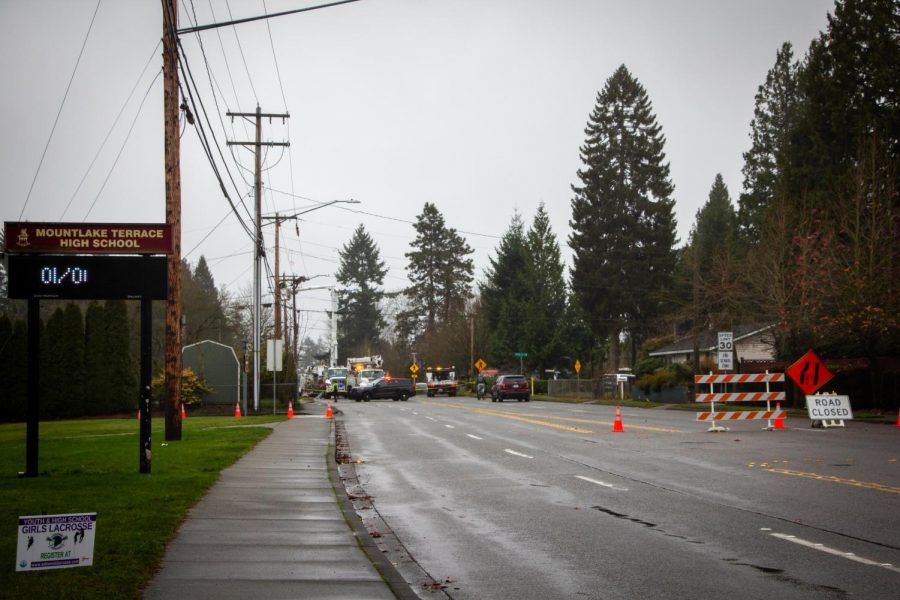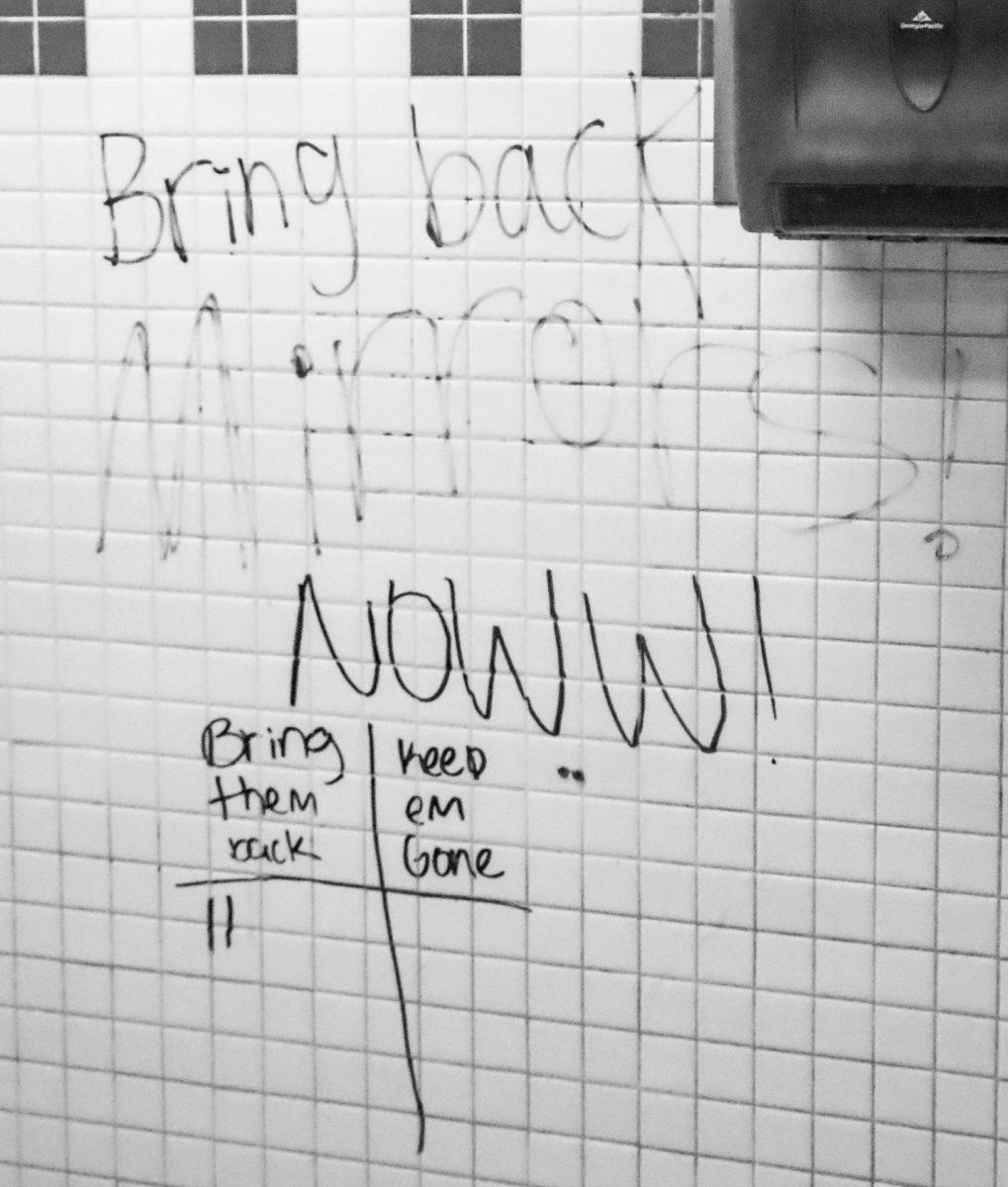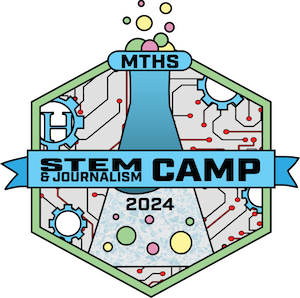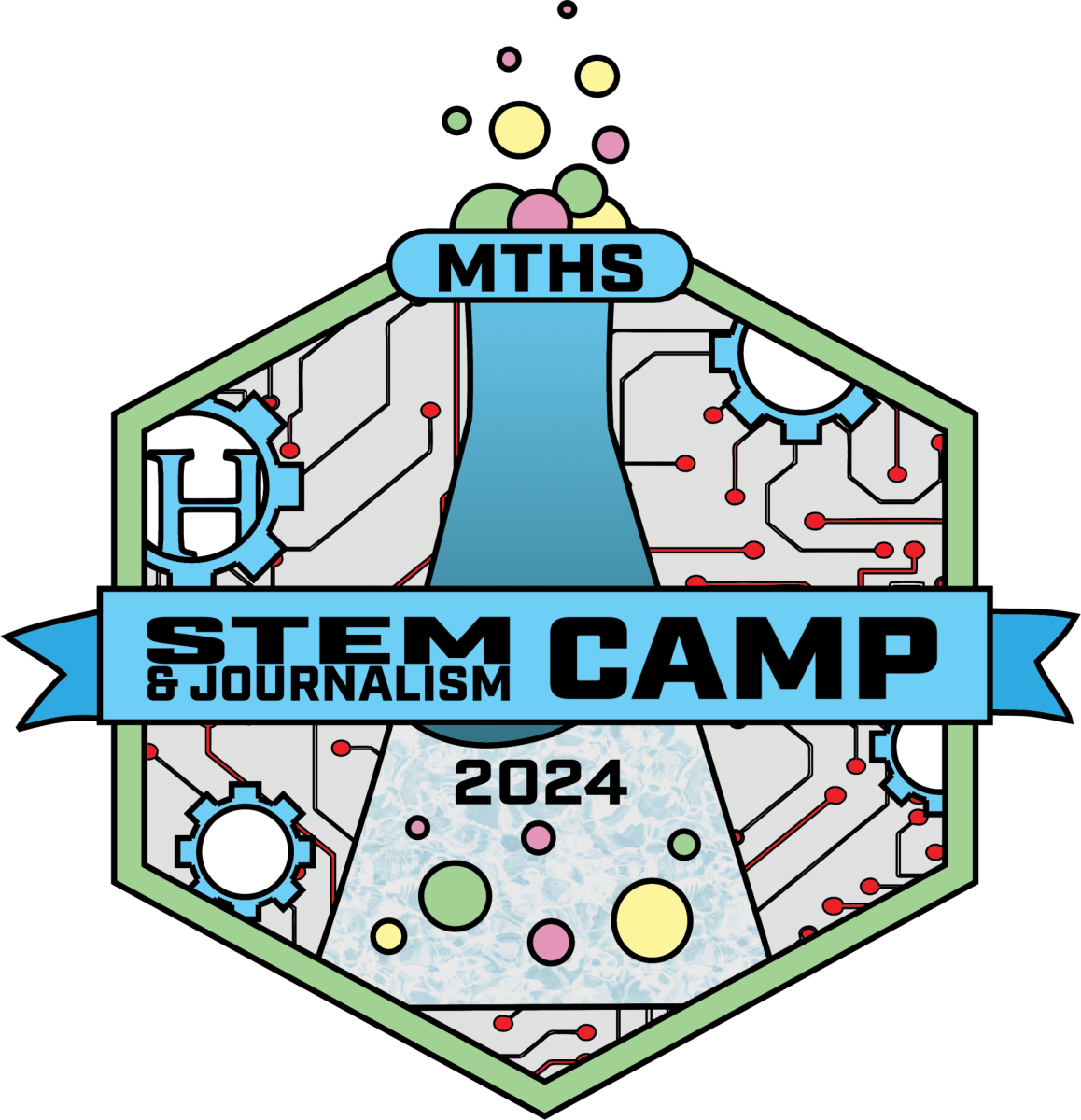On May 28 Mountlake Terrace High School was under a two and a half hour hard lock down drill. Unlike regular school lock downs, this drill was coordinated by and involved mainly the Brier and neighboring police and safety departments. The scenario was to have an active shooter(s) within the school, with students from the drama department as acting victims. School Recourse Officer Heidi Friosland and Assistant Principle Scott Morrison acted as the commanding officials.
Parents, students and community members were notified of the drill ahead of time. Student parking was prohibited on May 28 in order to make room for police and SWAT vehicles on school grounds. The command post for various police and SWAT teams was set up at the Mt. Zion Lutheran Church. At Terrace, there was a shelter set up in the front of the school as well as a Support 7 Van in the vacant parking lot. In the auxiliary gym, the drama student participants mocked themselves up with make-up to give themselves a wounded and bloody persona. Police set up strategic points outside of the school, went over reconnaissance tactics, and armed themselves with fake, life-size weapons.
Students rushed about during lunch in their last half hour before the drill. The only thing left was to enter sixth period and wait for the Principle’s call, which signaled the beginning of the lengthy hard lockdown.
The drill was staged in two phases. The first phase went into affect at 11:30 and finished at 1:50. Most students, staff, and unauthorized personal were required to remain in lock down stasis in their classrooms for this time. During this stage if the drill the police practiced rescue efforts.
With the help of the drama department, approximately 30 students were staged in empty classrooms in groups to act out a rescue scenario. Covered with fake wounds, these students helped the police carry through with their procedures to save potential victims.
“If you don’t have victims that act like victims, then people just sort of walk them out,” said Jamie Gravelle, six-year worker for the Emergency Services Coordinating Agency (ESCA), “What we’re trying to do is give them a realistic scenario. We also wanna freak ‘em out a little bit,” she added.
The police asked the drama kids in scenario to show themselves and asked them to lie down to assess their damage. They then asked the victims if they had a description or whereabouts of the shooter. After reassuring the victims, checking and guarding all possible entry/exit points, and calling for another rescue team, the students were carried off the danger area in the same way real wounded victims would have. They then returned to the auxiliary gym to regroup with the rest of the rescued actors.
“We were placed in the room, the police came in, shouted at us, and figured out our placements,” recalls Anastasia St. Marie.
The drama kids were then all gathered to describe their experience and were collectively asked about a shooter description by the school administrators. This was treated as a serious gathering for the sake of practice. Unknown to most students, the scenario called for two active shooters, one of who was arrested at about 11:55 a.m.
In addition to acting as rescue victims, some of the drama kids were then asked to play as seriously wounded victims. This helped officials practice medical procedures for the sake of the drill, although in a real situation this would not be the case.
Concluding phase one was a hostage situation at 1:30 p.m. Unfortunately, no observers were allowed to witness this part of the drill.
Though most of the classes were ordered to stay in lockdown mode, some staff and students were unexpectedly participants. Amy Frost’s AP U.S. History class was spontaneously interrupted and moved across the hall to room 228, where SWAT officers then escorted the class outside to wait out the remainder of phase one of the drill.
Phase two began after 1:50p.m. after most kids and faculty had evacuated the school. This gave the SWAT team control over the building to various drills over the afternoon, this time without the involvement of the vast majority of the students or staff.







